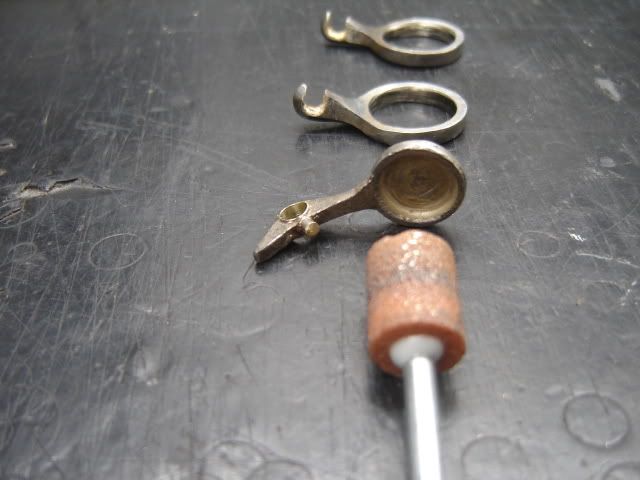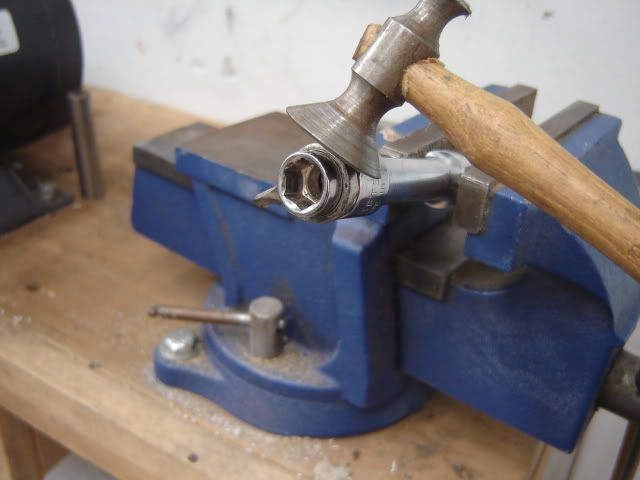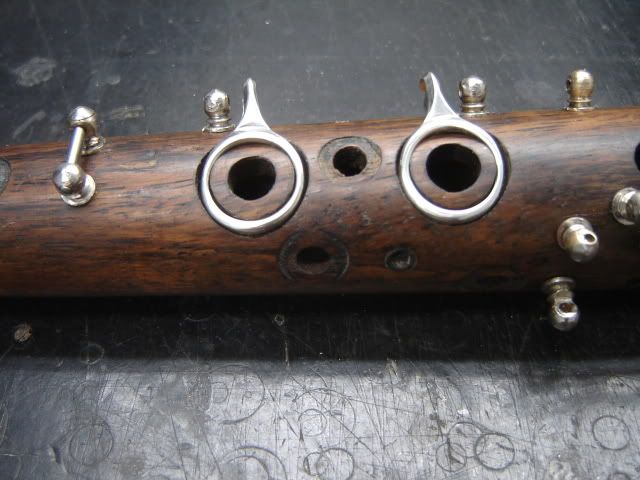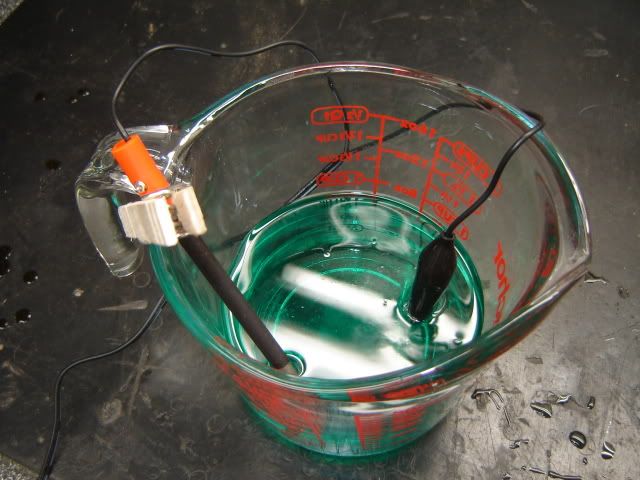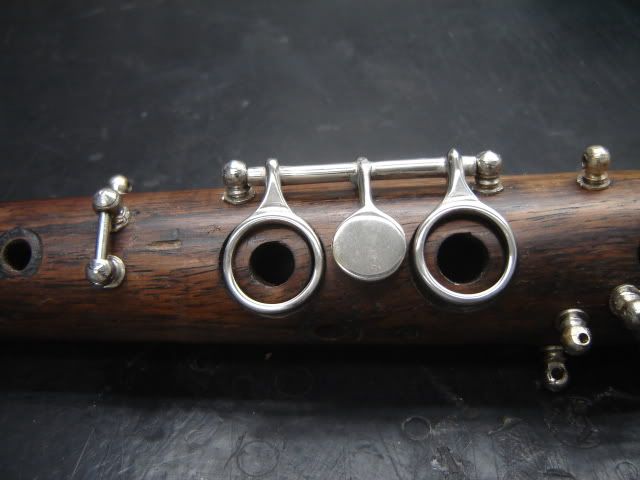The 3rd part in this series is the adapting the keys and mechanics of the tárogató to be more like modern instruments. There are basically 5 parts:
1) Threading one of each pairs of posts to accept a threaded hinge rod.
2) Reaming the original hinge tubes and unthreaded posts to accept a slightly oversize rod.
3) Removing the thick "key dishes" and replacing them with modern key cups.
4) Replacing the springs with modern needle springs and flat springs.
5) Facing the posts and hinge tubes with or without swedging to achieve a tight and smooth action.
For those interested in detail, some of the specs will be provided in the text. For others, the pictures will tell most of the general procedures.
The original key rods were dovetailed on one end to hold them in place and measured .081". This also was the approximate size of the hole in the posts. A .088" rod was selected to replace the originals and a 2-56 thread was chosen for the new hinge rod and threaded posts.
In order to tap the post for this size thread, a .070" inch hole had to be made in the post. The easiest way found to do this was to drill the post out to .093" and insert a piece of 3/32" brass tubing (.066" ID) and solder it into place using low temp silver solder. That assembly was then drilled out to .070" the correct size to accept the 2-56 tap. The non-threaded post and the hinge tube were drilled out to .089" to accept the .088" hinge rod. A .089" reamer has been ordered since so many keys will have to be resized and the reamer will do a better and faster job than a drill bit. ("You can't drill a hole in a hole" is what I was taught.)
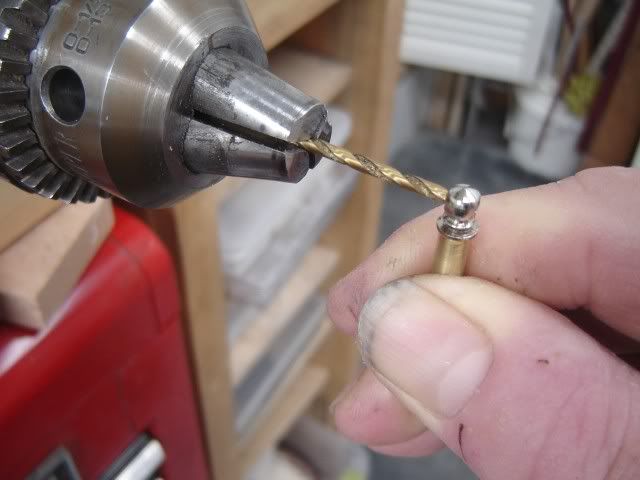
This photo shows drilling out the post to insert the brass tube. The post is held with a brass rod
drilled and threaded with an 8-32 thread that the rod screws into.
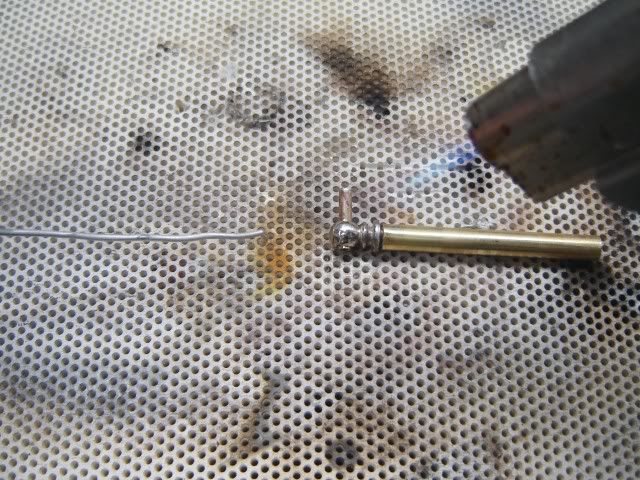
This shows soldering the brass tube into the post which was then cut off flush with the face of the post.
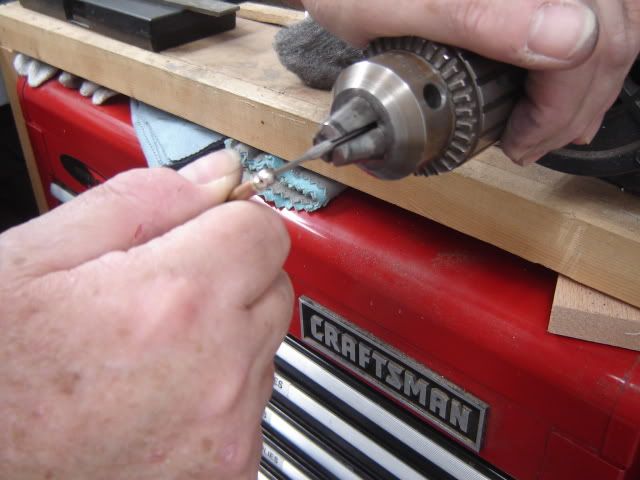
This shows the 2-56 tap chucked into the bench motor cutting threads into the post after drilling it out to .070"

Checking the new threaded rod for fit with posts on the tárogató.
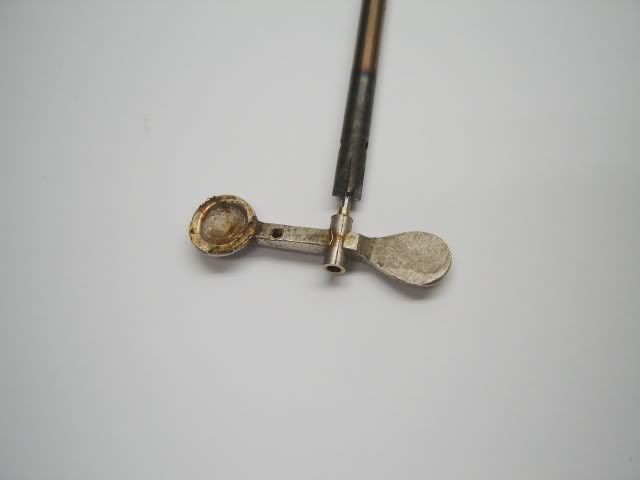
This shows using a hinge tube cutter to square off or "face" the key's hinge tube. The same tool
will be used to "face" the key side of the posts.

This shows the hinge of the key after "facing" with the hinge tube cutter.
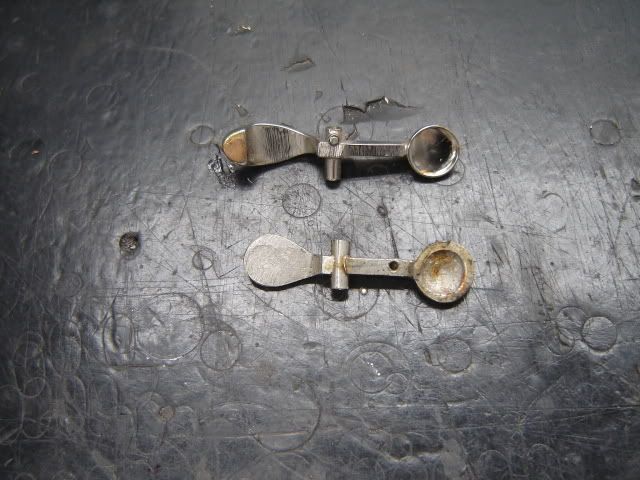
This image shows the original tárogató key and the modern key that will provide the "transplant".

Using a dremel tool to cut off the original "key dish".
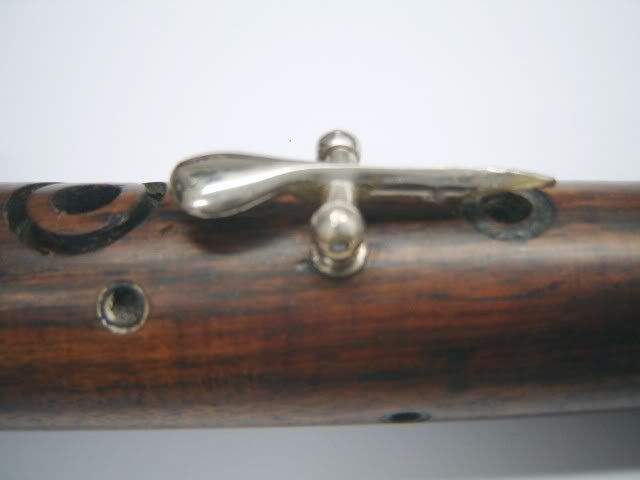
Checking the orientation of the key on the tárogató to determine the placement of the new key cup.
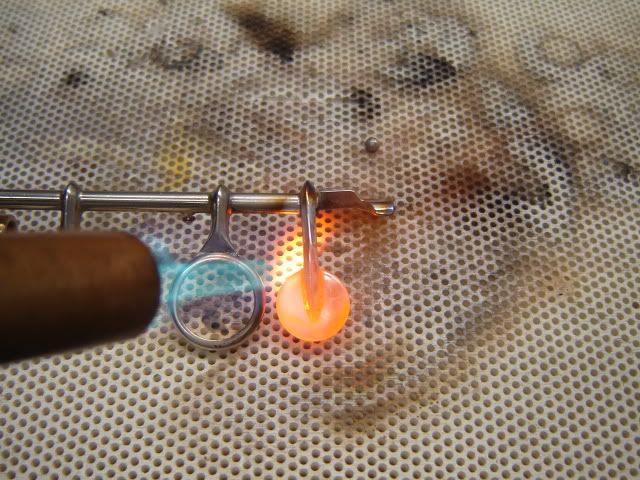
Unsoldering the key cup from one of the host clarinet keys.
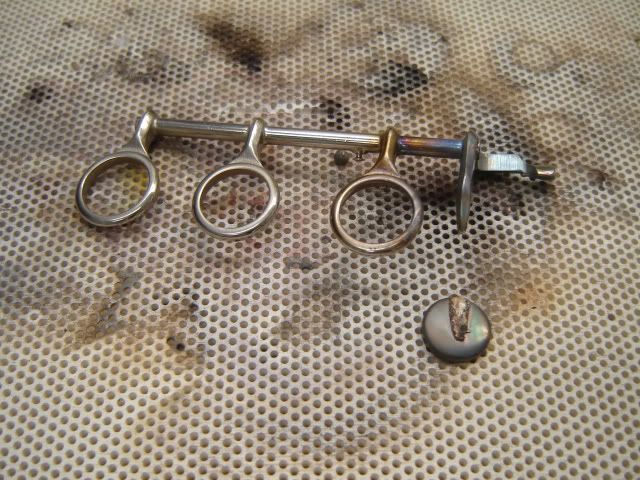
Clarinet key cup removed and ready to be cleaned up and silver soldered, uh I mean "brazed" to the tárogató key.

This shows the finished key installed on the tárogató.
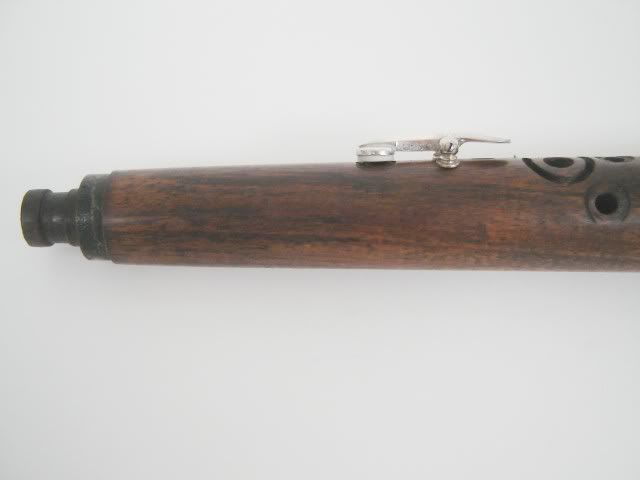
Here is a side view with a Valentino synthetic pad installed.
Now that I know the procedure works, it is just a matter of taking it key by key until the keywork is finished.
I have been given a junk bass clarinet to scavenge keys from, so I an confident that I will have all of the key
cup sizes I need. I will also order a nickle plating kit from Caswell to touch up the keys.
1) Threading one of each pairs of posts to accept a threaded hinge rod.
2) Reaming the original hinge tubes and unthreaded posts to accept a slightly oversize rod.
3) Removing the thick "key dishes" and replacing them with modern key cups.
4) Replacing the springs with modern needle springs and flat springs.
5) Facing the posts and hinge tubes with or without swedging to achieve a tight and smooth action.
For those interested in detail, some of the specs will be provided in the text. For others, the pictures will tell most of the general procedures.
The original key rods were dovetailed on one end to hold them in place and measured .081". This also was the approximate size of the hole in the posts. A .088" rod was selected to replace the originals and a 2-56 thread was chosen for the new hinge rod and threaded posts.
In order to tap the post for this size thread, a .070" inch hole had to be made in the post. The easiest way found to do this was to drill the post out to .093" and insert a piece of 3/32" brass tubing (.066" ID) and solder it into place using low temp silver solder. That assembly was then drilled out to .070" the correct size to accept the 2-56 tap. The non-threaded post and the hinge tube were drilled out to .089" to accept the .088" hinge rod. A .089" reamer has been ordered since so many keys will have to be resized and the reamer will do a better and faster job than a drill bit. ("You can't drill a hole in a hole" is what I was taught.)

This photo shows drilling out the post to insert the brass tube. The post is held with a brass rod
drilled and threaded with an 8-32 thread that the rod screws into.

This shows soldering the brass tube into the post which was then cut off flush with the face of the post.

This shows the 2-56 tap chucked into the bench motor cutting threads into the post after drilling it out to .070"

Checking the new threaded rod for fit with posts on the tárogató.

This shows using a hinge tube cutter to square off or "face" the key's hinge tube. The same tool
will be used to "face" the key side of the posts.

This shows the hinge of the key after "facing" with the hinge tube cutter.

This image shows the original tárogató key and the modern key that will provide the "transplant".

Using a dremel tool to cut off the original "key dish".

Checking the orientation of the key on the tárogató to determine the placement of the new key cup.

Unsoldering the key cup from one of the host clarinet keys.

Clarinet key cup removed and ready to be cleaned up and silver soldered, uh I mean "brazed" to the tárogató key.

This shows the finished key installed on the tárogató.

Here is a side view with a Valentino synthetic pad installed.
Now that I know the procedure works, it is just a matter of taking it key by key until the keywork is finished.
I have been given a junk bass clarinet to scavenge keys from, so I an confident that I will have all of the key
cup sizes I need. I will also order a nickle plating kit from Caswell to touch up the keys.



